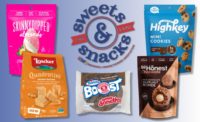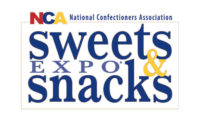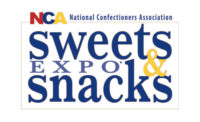
I don’t know about you, but snacking on carrots and celery all the time gets boring. I don’t think I’m alone in that assessment. And I’m certainly not alone in my habit of snacking. Consumer demand in the United States for snack foods exceeded $5.6 billion in 2010. Not million-billion.
Snack packaging demand was forecast to exceed $5.6 billion in 2010, with growth fueled by rising snack product shipments, a favorable outlook for disposable personal income, according to a study by The Freedonia Group, a market research firm located in Cleveland, Ohio.
The snack market, which covers potato chips, tortilla chips, nuts, popcorn, cheese snacks, pretzels, dry fruit snacks, meat snacks, corn snacks and other salted products, is obviously mature, but has grown at a modest pace with continued product innovation. And it doesn’t stop there.
According to a report from Global Industry Analysts, Inc., San Jose, Calif., the snack food market will reach a whopping $334 billion by 2015 and 48,519 tons in volume terms by the year 2015, driven primarily by changing consumer demographics, perceptions, priorities and affluence levels.
That means more consumers are snacking more frequently, which is contributing to the recent growth. I couldn’t agree more.
But are those snacks the healthy versions or could they be too salty, too fattening and loaded with empty calories? I often substitute snacks for meals and I may be a statistic: We live such hectic lives that leave little room for traditional family meals. More convenient snack foods that are tasty and healthy are doubling as appetizers and meals for many consumers. That’s not really a surprise.
But as consumers become more health-conscious and want more better-for-you munchies, the major food marketers are catching on or should catch on, taking the opportunity to expand their offerings to include low-fat and low-calorie snacks-snacks with cholesterol-lowering plant sterols, snacks with less heart-wrenching sodium, snacks with fewer calories and less fat. That’s good for me and maybe you, too. However, snack manufacturers aim to cut costs and increase profits, therefore, some of the players will increasingly adopt technology into their snack production methods.
There are strong opportunities for slim, lean, fat-free and guilt-free snacks. Meanwhile, innovation in terms of packaging, flavors and convenience will also continue to be major growth drivers. Markets such as Asia Pacific, Latin America and Eastern Europe represent huge potential for future expansion. The folks across the ponds like their snacks and eat them, too.
Portable packaging and portion-packs certainly have also helped the market. Easy-to-carry standup pouches, 100-calorie and bite-sized packs, resealable bags and finger-hugging or car-cup canisters add new dimensions to the convenience factor, which I’m convinced, will continue to prevail as a major product variable for commercial success.
We’ll keep on snackin’ if the industry keeps making those snacks tasty yet healthier. I know, it’s impossible to ask for the world, and these products can’t be made unless the right ingredients at the right cost can be found. And yes, I know, the economic outlook is still rough and a lot of you are in no better shape than last year. But more widely available salt-free chips would be nice. We even hear that Kraft Foods, which is making plans to drive profit growth, created something called a “virtuous cycle,” a brand development program that cuts overhead and invests in marketing and innovation.
So come on food companies-help consumers snack healthy and develop those good-for-you new products. Let’s see what you can do. Consumers will buy if it tastes good. If a snack is tasty and good for them, that would be incredible.





